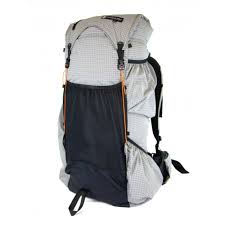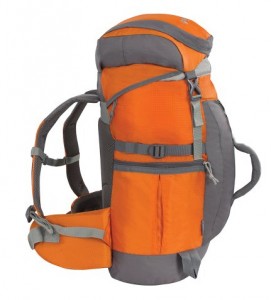 Before you buy a backpack, you need to decide what type of backpacker you want to: A traditionalist who carries 30-50 pounds of gear on a weekend, or a more modern, lightweight backpacker who carries smaller, lighter and smarter gear, lowering their weight to a comfortable 15 pounds?
Before you buy a backpack, you need to decide what type of backpacker you want to: A traditionalist who carries 30-50 pounds of gear on a weekend, or a more modern, lightweight backpacker who carries smaller, lighter and smarter gear, lowering their weight to a comfortable 15 pounds?
Try Before You Buy
Always rent or borrow before making your purchase. REI rents packs at a reasonable price and you probably don’t know what you (or your son) needs until you try them in the field.
Once you have some experience backpacking and get a good feel of the gear you plan to take, then it’s time to consult an expert.
Consider what’s going inside first
If the majority of your trips are overnights or extended weekends, you probably want a pack that best suits those trips. Consider a 50 liter pack.
The size and type of backpack should reflect what you put in it. Your sleeping bag is the biggest culprit in taking up space. I am a huge advocate of investing in a lightweight, highly compressible 3-season bag before buying a backpack. The bag should weigh less than 3-pounds and compress down enough to consume no more than one third of the volume of the backpack.
No not buy a pack based on “the big trip” you have planned next year. You will regret having to haul all that extra weight…
Remember, most large backpacks weigh 4-6 pounds empty! You probably do not want to carry an extra 4 pounds on weekend trips. For those long treks (ten days or more), rent a high-volume backpack if you have to. (Although, thru hikers spend four to six months on the Pacific Crest Trail and on average, they use 50 liter rucksacks and carry only 15-20 pounds trail weight with them).
Stores like REI will often persuade new backpackers into buying large-volume backpacks of 70-80 liters or more. Of course, these stores often want you to fill your new pack with all their equipment.
With a little experience, you will learn that smaller volume packs (50 to 60 liters or less) are sufficient for most trips; they are less expensive and more comfortable. Plus, if there is extra room in the backpack, it will be filled with extra gear you probably do not need…
For most 2 to 5-day trips, think about a pack no more than 60 liters (3800 ci) that weighs less than 3 lbs.
External Frame Packs
I personally do not like external frame backpacks for a number of reasons: although they can be a little lighter than bulky internal packs, externals are designed to help evenly distribute heavier loads onto your back and hips. They are also designed to strap equipment onto the metal frame, making sleeping bags, foam pads and other gear vulnerable to abrasion, wetness and falling off.
External frame packs also limit your head’s range of motion, making it more difficult to looking “up.” External packs are not as snug against your body; they sway on your back making cross country, rock-hopping and stream crossings more difficult.
If you plan on carrying 30-50+ pounds of equipment, and remaining on trail (vs not going cross country) then an external frame pack might be the best choice.
Welcome to the 21st Century
Technology has come a long way since the 1970s and you will notice that 99% of backpacks sold today are internal frame or rucksack design.
A good, lightweight or ultralight internal pack like the Outdoor Products Arrowhead (for small adults or kids) or a Gossamer Gear Mariposa can be purchased online and weighs less than 2 pounds! They are super comfortable, durable and big enough for a week-long trip (if you pack smart).
Other advantages of internal packs is that they can be used as a “rucksack” for those day hikes or peak bagging; internals are easier to store inside your tent if needed–they fold up flat since there is no metal frame; internals keep your sleeping bag, and other equipment safer and dryer since they are typically stored inside the pack.
Modern packs like the Golite Jam and Gossamer Gear packs are made of GridStop Dyneema® fabric, which is 15-times stronger than steel!
Lastly, smaller internal frame packs encourage you to pack smarter–taking only the equipment you need.
By going light, you are able to cover longer distances with less fatigue. You will see more, enjoy the journey more and have more fun. But that’s my opinion….
If you have any questions, please email me. I am always happy to help.



Pingback: Outdoor Products Backpack for Kids |